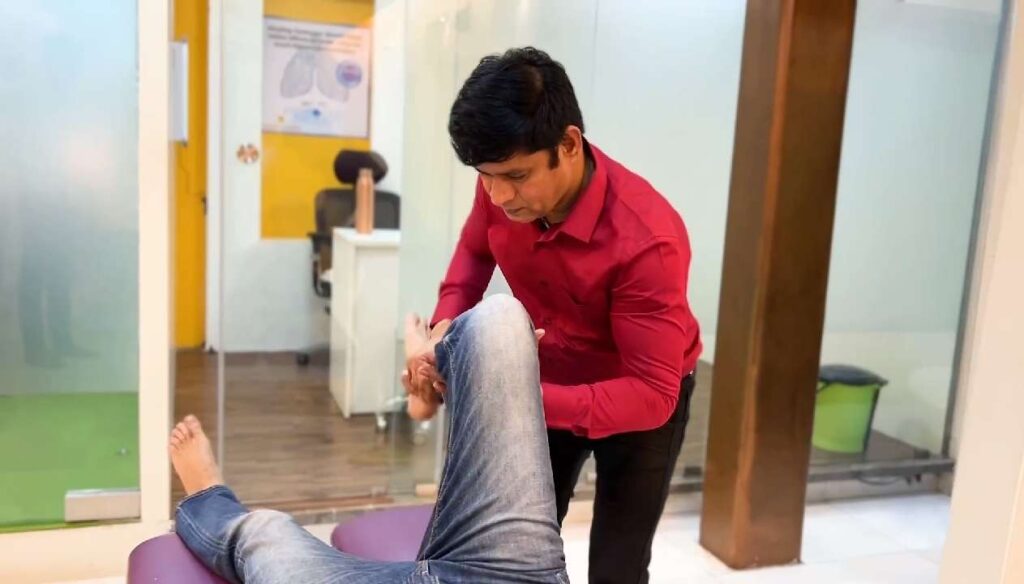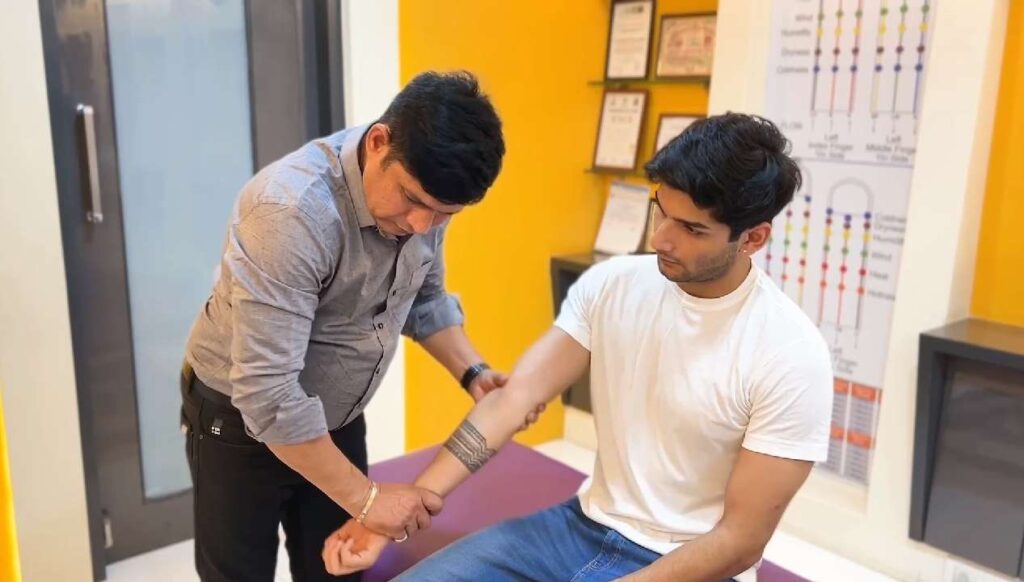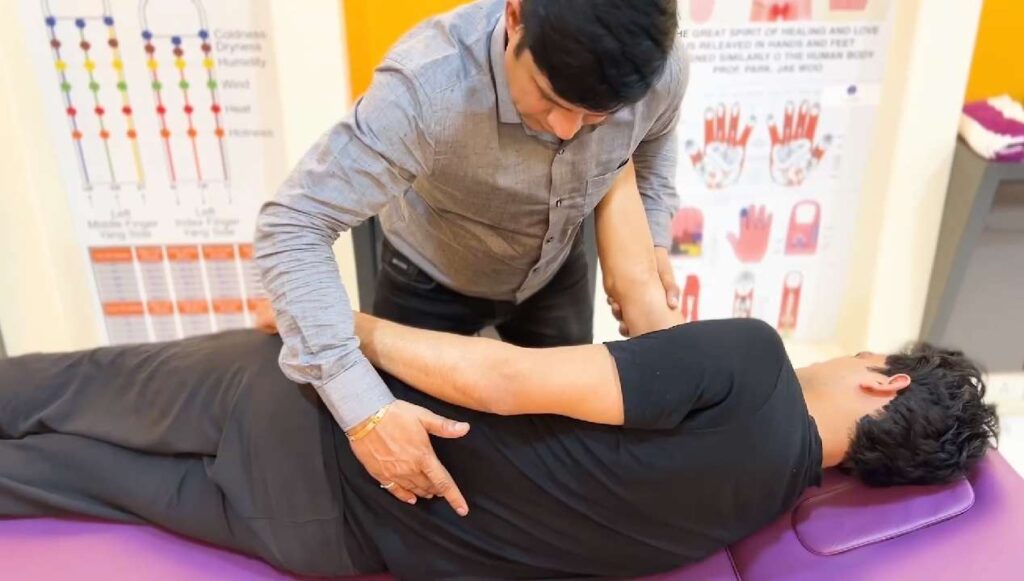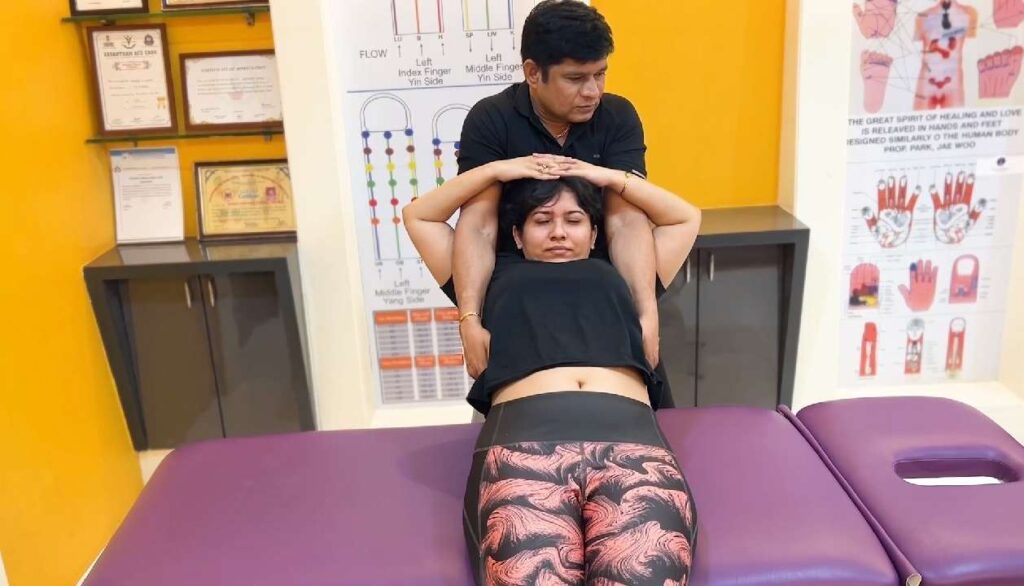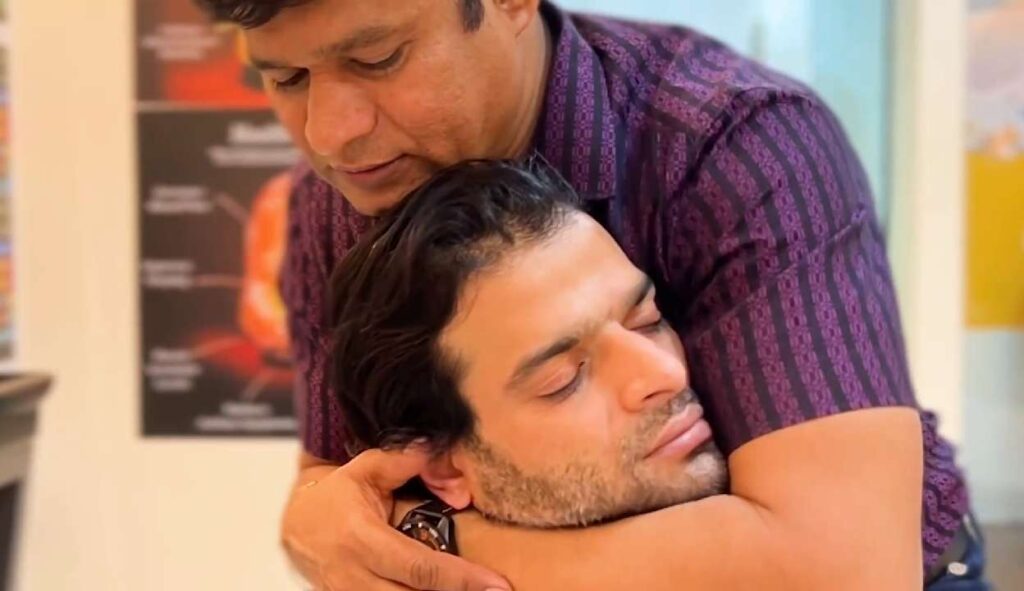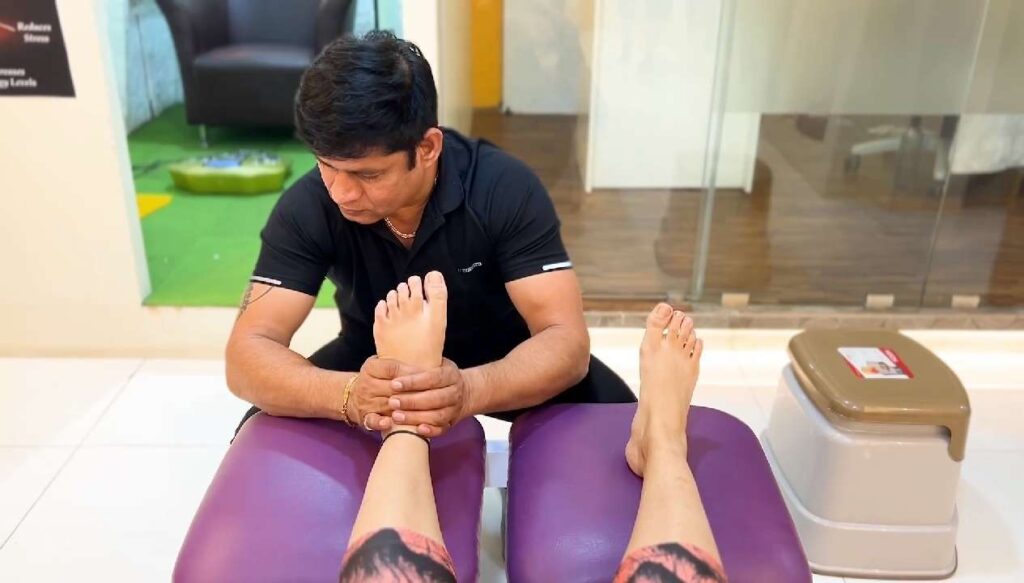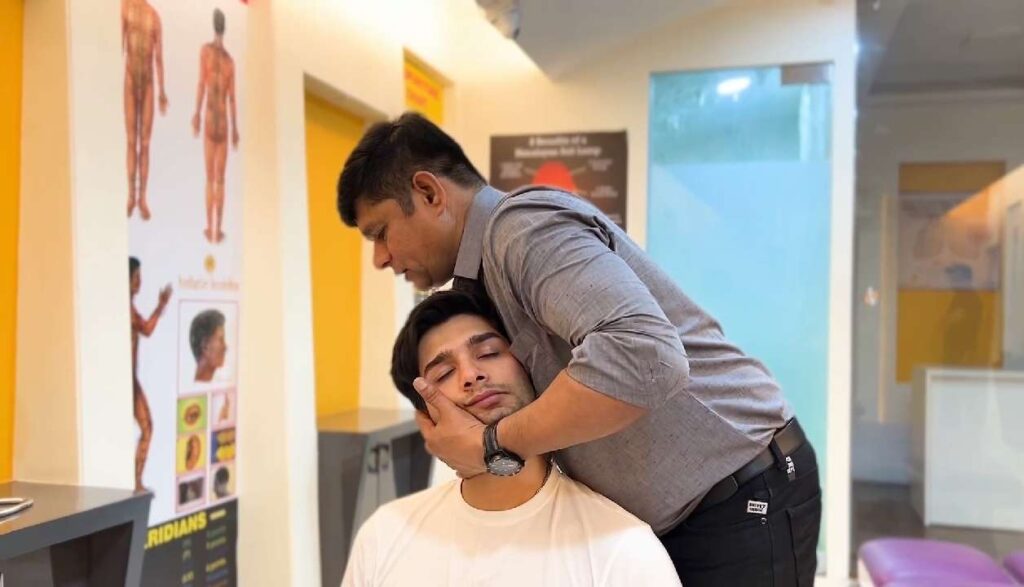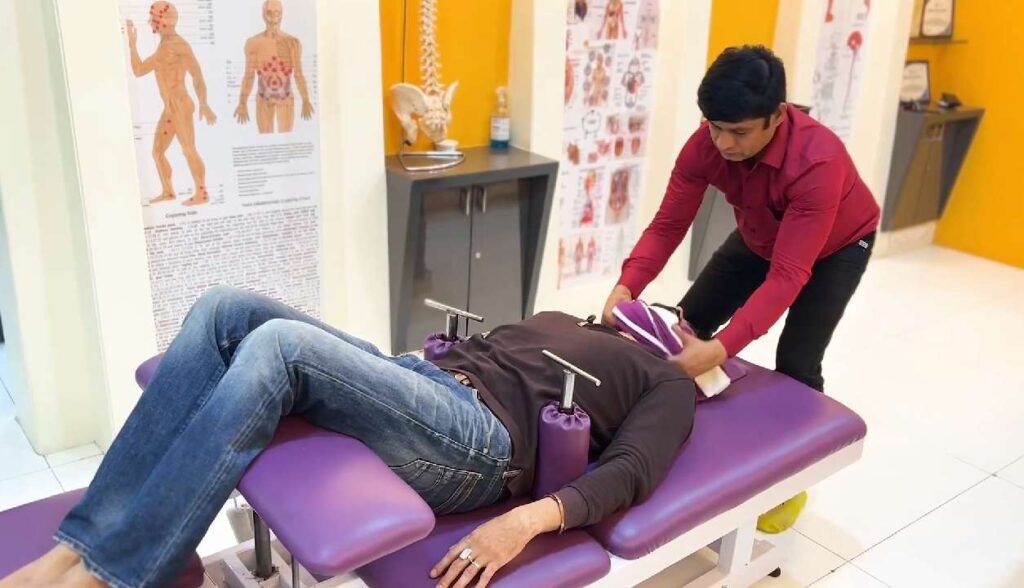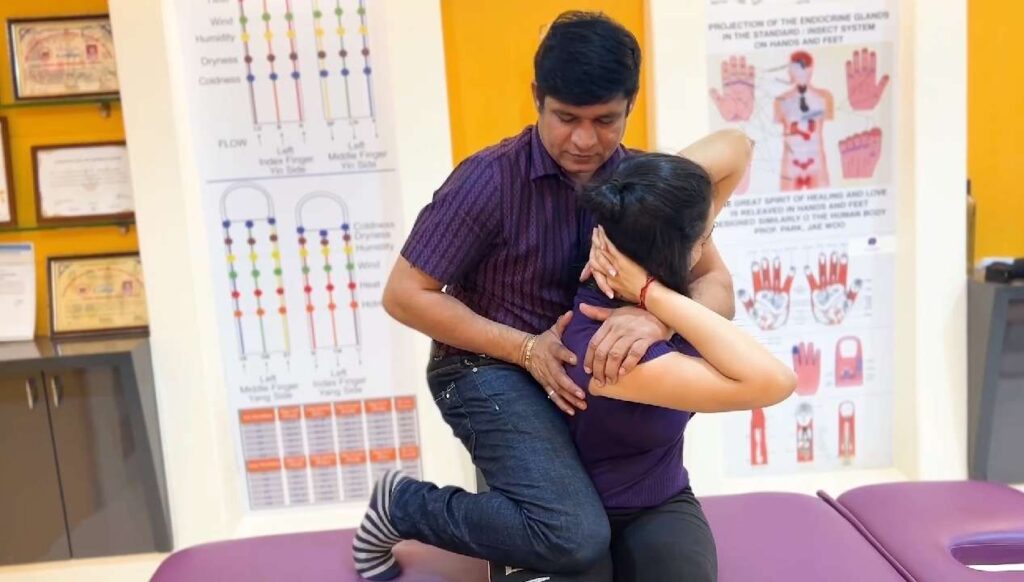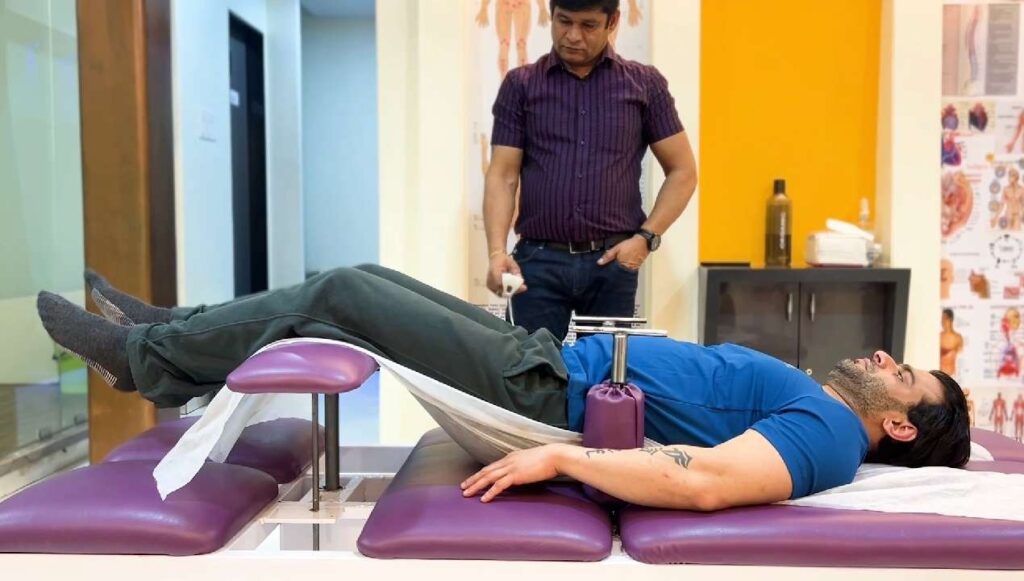Chiropractor
📌 Top Verified Chiropractors In Thane
Services Offered By Dr. Ravi Shinde
We Offer a Whole Range of Chiropractic Services
Other Chiropractors In Thane

Chiropractor
Mumbai, Thane
Specialist in Chiropractic Treatment
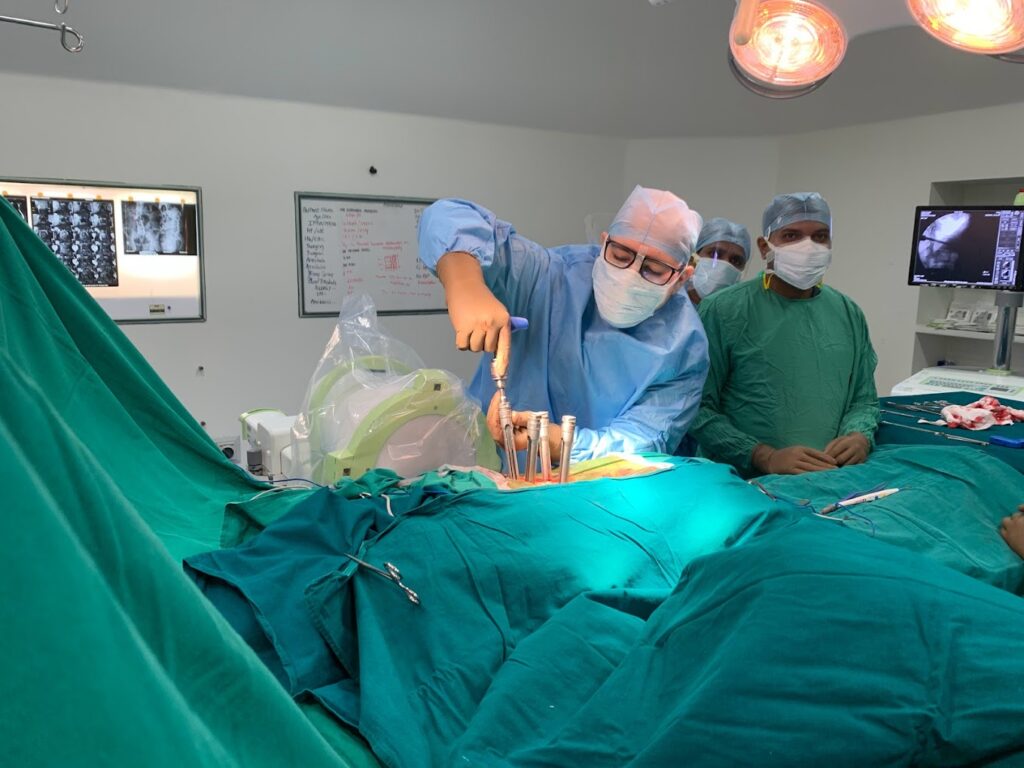
Chiropractor
Mumbai, Thane
Specialist in Chiropractic Treatment

Chiropractor
Mumbai, Thane
Specialist in Chiropractic Treatment
People Also Ask?
(FAQs About Frozen Shoulder Treatment)
1️⃣ How do I know if I have frozen shoulder?
Frozen shoulder typically causes stiffness, pain, and reduced range of motion in the shoulder joint. It progresses in three stages—freezing, frozen, and thawing. If you experience persistent pain and difficulty moving your arm, consult a specialist for diagnosis.
2️⃣ What are the best treatment options for frozen shoulder?
The cost for chiropractic adjustment in Kurla generally ranges between ₹1,500 to ₹4,000 per session, depending on the clinic and the chiropractor’s expertise. Many clinics offer tailored treatment plans, ensuring you receive the best care at affordable prices. Contact our verified chiropractor Dr. Ravi Shinde in Kurla for a consultation and take the first step toward a healthier lifestyle!
3️⃣ How long does it take to recover from frozen shoulder?
Recovery varies but typically takes between six months to two years. With proper treatment, including physiotherapy and home exercises, improvement can be seen within a few months.
4️⃣ Can frozen shoulder be treated without surgery?
Yes! Most cases improve with non-surgical treatments like physiotherapy, medications, and lifestyle modifications. Surgery is only considered if conservative treatments fail to provide relief.
5️⃣ Will my shoulder pain return after treatment?
- With proper care, the chances of recurrence are low. However, conditions like diabetes or prolonged immobility can increase the risk. Regular stretching and strengthening exercises can help maintain shoulder mobility.
Testimonials
Amit Patel
"I struggled with shoulder pain for months, but the physiotherapy sessions here were a game-changer. The staff was supportive, and I saw improvement within weeks!"
Zainab Shaikh - "I was afraid I might need surgery, but the doctors assured me otherwise. With consistent therapy, my shoulder regained movement without invasive procedures. Highly recommend!"
Zainab Shaikh
"I was afraid I might need surgery, but the doctors assured me otherwise. With consistent therapy, my shoulder regained movement without invasive procedures. Highly recommend!"
Suresh Iyer
"The team here is professional and caring. They explained my condition thoroughly and helped me through the entire recovery process. My frozen shoulder is now a thing of the past!"
Snehal Deshmukh
"I was in constant pain, unable to do daily chores. Thanks to the expert guidance and treatment, I am now pain-free. Best decision I made!"
Rahul Mehta
"After trying home remedies without success, I decided to seek professional help. The exercises and treatments were tailored to my needs, and I regained full mobility. Excellent care!"
Blogs Related To Frozen Shoulder Treatment In Thane
1️⃣ Frozen Shoulder: Causes, Symptoms & Treatment Options Introduction:
Frozen shoulder (adhesive capsulitis) is a painful and limiting condition that affects the shoulder joint. Many people mistake it for general stiffness or an injury, leading to delayed treatment. Understanding the causes, symptoms, and available treatments is crucial for recovery.
Main Body:
What is Frozen Shoulder? Explanation of the condition and how it develops in stages—freezing, frozen, and thawing.
Causes: Risk factors such as diabetes, prolonged immobility (post-surgery or injury), hormonal changes, and inflammatory conditions.
Symptoms: Pain, stiffness, and progressive loss of mobility over months.
Diagnosis: How specialists diagnose frozen shoulder through physical exams, X-rays, or MRIs.
Treatment Options:
Non-surgical: Physiotherapy, pain relief medications, corticosteroid injections, and home exercises.
Surgical (in severe cases): Shoulder manipulation or arthroscopic release.
Conclusion:
Early diagnosis and treatment are key to a quicker recovery. Seeking professional help ensures the right approach is taken to restore mobility.
2️⃣ 5 Effective Home Exercises to Relieve Frozen Shoulder Pain
Introduction:
If you have frozen shoulder, staying active with the right exercises can speed up recovery and prevent further stiffness. Here are five simple but effective exercises that can be done at home.
Main Body:
Pendulum Stretch – Stand, lean slightly forward, and let your arm hang. Swing it gently in circles to loosen the shoulder.
Towel Stretch – Hold a towel behind your back with both hands and stretch it upward and downward.
Wall Walk – Stand facing a wall and slowly walk your fingers upward as far as possible.
Cross-Body Stretch – Bring one arm across your chest and hold it with the other arm for a deep stretch.
External Rotation with Resistance Band – Hold a resistance band and rotate your forearm outward to strengthen the shoulder muscles.
Conclusion:
These exercises help improve flexibility and reduce pain. However, consistency is key, and if pain worsens, professional guidance is recommended.
3️⃣ How Physiotherapy Can Help You Recover from Frozen Shoulder
Introduction:
Physiotherapy is one of the most effective treatments for frozen shoulder. A well-designed therapy plan can gradually restore movement and reduce pain.
Main Body:
Why Physiotherapy? It helps improve flexibility, break down adhesions in the joint, and strengthen surrounding muscles.
Types of Physiotherapy Techniques:
Stretching & Mobility Exercises – Improve range of motion.
Joint Mobilization Therapy – Performed by a physiotherapist to loosen the joint capsule.
Heat & Ice Therapy – Helps reduce inflammation and improve blood circulation.
Ultrasound Therapy – Uses sound waves to reduce stiffness.
Expected Recovery Timeline: What patients can expect from therapy sessions and at-home exercises.
Conclusion:
With patience and consistency, physiotherapy can fully restore shoulder function without surgery. Consulting a professional ensures the right approach for individual needs.
4️⃣ Frozen Shoulder vs. Rotator Cuff Injury: Key Differences & Treatment
Introduction:
Shoulder pain isn’t always due to frozen shoulder. Many people confuse it with rotator cuff injuries, which require different treatment approaches. Here’s how to differentiate them.
Main Body:
Frozen Shoulder vs. Rotator Cuff Injury:
Frozen Shoulder: Gradual onset, stiffness, and limited range of motion in all directions.
Rotator Cuff Injury: Sharp pain, weakness, and pain during specific movements.
Causes of Each Condition:
Frozen shoulder: Common in diabetics and post-surgery patients.
Rotator cuff injury: Often due to repetitive motion or sudden trauma.
Treatment Approaches:
Frozen Shoulder: Physiotherapy, stretching, and inflammation control.
Rotator Cuff Injury: Rest, strengthening exercises, and sometimes surgery.
Conclusion:
Knowing the difference helps in seeking the right treatment. If shoulder pain persists, consulting a specialist is crucial for accurate diagnosis and management.
5️⃣ How to Prevent Frozen Shoulder: Tips for a Healthy Shoulder
Introduction:
While frozen shoulder can be treated, prevention is always better. Here are some essential tips to maintain healthy shoulder mobility and avoid stiffness.
Main Body:
Stay Active: Avoid prolonged immobility, especially after an injury or surgery.
Regular Stretching & Exercises: Incorporate shoulder mobility exercises into your daily routine.
Maintain Good Posture: Slouching and improper ergonomics can contribute to shoulder problems.
Manage Underlying Conditions: Diabetics and those with thyroid disorders should manage their conditions to reduce risk.
Heat & Cold Therapy: Applying heat or ice after strenuous activities helps prevent inflammation.
Conclusion:
By taking proactive steps, you can reduce the risk of frozen shoulder and maintain a pain-free, active lifestyle.
Table of Contents
Toggle
